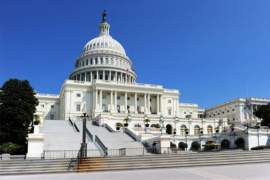
A Guide to the Forest Service

What is the Forest Service?
The Forest Service is a Federal of the United States Department of Agriculture responsible for administering the nation’s 155 national forests and 20 national grasslands, which approximately account for 193 million acres of land. The primary divisions of the Forest Service include State and Private Forestry organizations, the National Forest System and the Research and Development Branch.
Forest Service Quick Facts
The following details outline the administration of the Forest Service:
The Forest Service was formed on February 1 of 1905
The headquarters of the Forest Service are located in the Sidney R. Yates Building at 1400 Independence Ave in South Western Washington, D.C.
The Forest Service Department employs roughly 29,000 government workers and operates under an annual budget of $5.8 billion.
The Forest Service is responsible for the jurisdiction over the Federal Government of the United States
The head of the Forest Service is Thomas Tidwell; Mr. Tidwell’s formal title is the Chief of the United States Forest Service. Hank Kashdan is the current Associate Chief of the Department.
The Parent Agency of the United States Forest Service is the United States Department of Agriculture
Mission of the United States Forest Service:
The United Forest Service stated mission is “to sustain the health, diversity, and productivity of the Nation’s forests and grasslands to meet the needs of present and future generations. As the predominant Federal agency in the field of natural conservation, the United States Forest Service provides leadership in the management, protection and general use of the United States’ National forests, as well as the country’s rangeland and aquatic ecosystems.
The United States Forest Service’s ecosystem approach in regards to conservation and management integrates social, economic and ecological factors to help enhance the quality of the environment to meet current and future needs.
Through implementation of various land and resource management plans, the United States Forest Service agency ensures sustainable ecosystems through the restoration and maintaining of specie diversification and ecological productivity to help provide recreation, timber, minerals, wildlife, fish, water, wilderness and aesthetic values for current and future generations of humans.
Every day, the Forest Service balances resource extraction, resource protection and recreation to the forests of the United States. The work includes detailed management of over 193 million acres of national forests and grasslands and the harvesting of over 1.5 billion trees per year. Furthermore, the Forest Agency was responsible for fighting fires on over 3 million of acres of land.
In total, the Forest Service includes, in regards to an organizational structure, ranger districts, regions, research stations, national forests and research work units as well as the Northeastern Area Office for State and Private Forestry. Each subdivision or level of the Forest Service possesses responsibility for a variety of functions.
Government Agency of the Executive Branch
Government agencies are defined as organizations, councils, and offices operating under the jurisdiction of the Federal Government of the United States of America; each federal agency retains specific administrative jurisdiction over specific facets latent within the operations of the United States Government.
The Forest Service functions as a government agency under the Executive Branch of the United States government, which is comprised of 3 total branches; in addition to the Executive branch – which is responsible for the regulation and enforcement of operational legislation existing within the United States of America – there also exists the Legislative and Judicial Branches.
NEXT: US Patent and Trademark Office





















